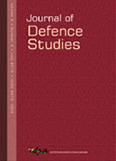NASA Engaging China
NASA Administrator Charles Bolden visited Beijing on October 16 – 21 to discuss cooperation in manned space flight. While one swallow does not make a summer, it may signal that the US may be considering greater engagement with China in outer space, particularly manned flight.
- Gunjan Singh
- October 29, 2010











